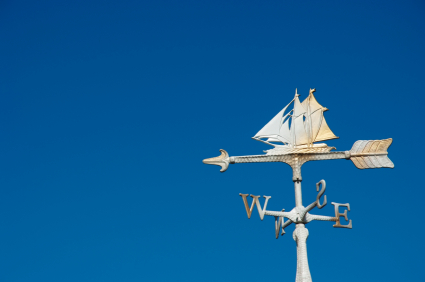
By Kyle Tetting
Despite some recent calming in the markets, April was a choppy ride for investors. An intra-month drop of 12.1% in the S&P 500, coupled with one of the worst weeks for bonds in decades, has given way to an eerie calm. Measures of implied volatility have come down drastically, and the S&P clawed back much of the early April decline on the heels of a tariff pause and some decent earnings reports.
Temper expectations
My advice: Don’t be lulled by those recent improvements. It’s important to temper expectations. Much of the recovery so far came from an optimistic outlook for trade policy after hoping that the pause would mean a return to business as usual. Absent clear trade agreements or changed policy, we’ve just witnessed a massive storm roll through – with the prospects for much more wind and rain on the other side.
For investors, we seem akin to be sitting in the eye of the hurricane, a feeling I hope not to experience literally. While I’m sure it’s tempting to step outside, assess the damage and begin the repairs as soon as the winds die down, it’s probably wiser to wait out the storm. I think we are in a similar place with our portfolios.
Learn more
Tariff volatility: Investor questions, by Kyle Tetting
Funding retirements amid turbulence, by Steve Giles
Seeking balance amid volatility, by Kyle Tetting
State of the balanced investor, a Money Talk Video with Adam Baley
Volatility: Stock market vs. your portfolio, a Money Talk Video with Kyle Tetting
Why investments outperform their investors, a Money Talk Video with Kyle Tetting
To be clear, I am not suggesting the path forward is necessarily fraught. But, with trade deals yet to be struck and reports that the U.S. economy has been more troubled than expected by tariff talk, we are dwelling in a broad cone of uncertainty.
Check your bearings
My suggestion for investors: Use the momentary calm to take stock of how well your portfolio navigated the recent decline, considering your expectations. In other words, how do you feel about what you just experienced? We know from behavioral economics that fear of declines or aversion to loss often trump investors’ better judgment amid market downturns. There’s no better time to reassess than after a bout of volatility.
From what I’ve seen so far, portfolios have been faring better than I expected, even if it hasn’t felt great.
For most investors, the experience so far suggests that we’ve built something sturdy enough to weather the storm. Some might want to use the calm to find buying opportunities or reposition the portfolio. Unfortunately, absent actual information – not just soundbites or headlines – we’d simply be going out to fix the roof in eye of the hurricane. The back half of the storm may be approaching. We can’t know what we’re stepping in front of.
Consider your balance
That isn’t to say we should do nothing. If your recent experience is one of considerably more consternation than you care to relive, let’s talk about what it would mean to do something different. Better now in the relative lull than amid further gusts of volatility.
In many ways, though, nothing has changed. I remain cautiously optimistic that corporations domestically and abroad will adapt to changing rules and continue to reward patient investors. That cone of uncertainty can at times shake that optimism. But, even if the storm source is different, the nature of investing always comes with weighty questions and unclear answers.
With bonds still offering attractive yield and the nature of global trade changing, the role of balance remains central.
Absent one rough week in mid-April, 2025 has been a great year for bond investors. Add in stronger-than-expected returns outside the U.S. and some stability in traditional value areas of the market, and balanced portfolios are holding up better than I had hoped. Again, the forecast projects a wide cone of uncertainty, but diversification – as designed – has been proving its worth.